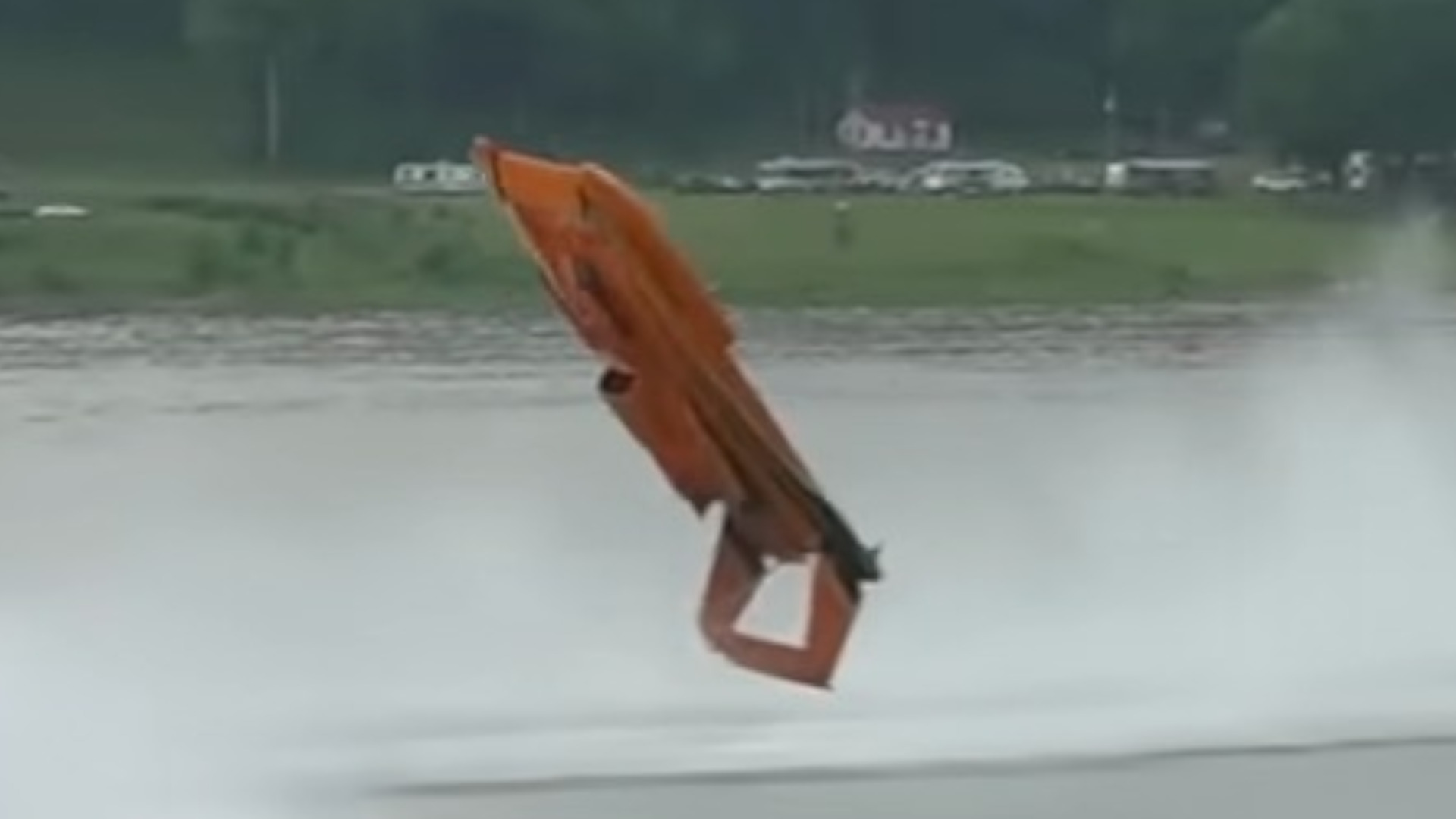

Backflips are dangerous if you don’t pull them off. It doesn’t matter if you’re talking about doing it in a car, bike, or boat—get it wrong, and you’re likely to break your neck, or worse. One hydroplane racer found themselves upside down by surprise recently but by a lucky twist of fate, managed to stick the landing.
The incident occurred at the Indiana Governor’s Cup, a race in the H1 Unlimited series run by the American Power Boat Association. Driver Dustin Echols was piloting the U-40 entry for Bucket List Racing when the hydroplane underwent a near-catastrophic blowover event. The flip was captured from multiple angles, as seen on YouTube, including by an onboard camera.

The boat can be seen to suddenly soar into the air, executing a full backflip before crashing back down into to the water. The turbine-powered boat can be seen slowly motoring along immediately after the incident. According to the team, Echols had attempted to counteract the blowover through the proper application of throttle and canard controls but was unable to stop the flip from occurring.
While the rough landing left Echols very sore, he was thankfully free of serious injuries. From a casual look, it may appear the boat was largely unharmed, but that was absolutely not the case.
As discussed by the team, the boat had suffered damage to the right sponson prior to the flip, which played a role in the ensuing blowover. The impact from the landing then took a huge toll on the boat, which twisted the hull with significant damage to internal framing. The boat has since been rebuilt and reskinned, and now wears a livery for its new sponsor, Flav-R-Pac.




Blowover is a problem common to hydroplanes, as explained in great detail by engineer Roger Schaffer. The hull of a hydroplane is intended to generate lift to allow it to skim over the water. Typically, forces on the hydroplane are balanced so that it rides in a stable fashion on the surface.
However, if something unbalances these forces, such as body damage or a sudden gust of wind, the front end can pitch up too far and the hydroplane’s control surfaces can’t counteract the sudden increase in lift. When this happens, the boat can quickly fly into the air and backflip, or “blowover.”

As with any discipline featuring powerplants with thousands of horsepower, hydroplane racing does come with serious risks. That said, it’s a testament to years of safety improvements that no major harm came to the driver in this drastic incident.
Got a tip? Let the author know: lewin@thedrive.com